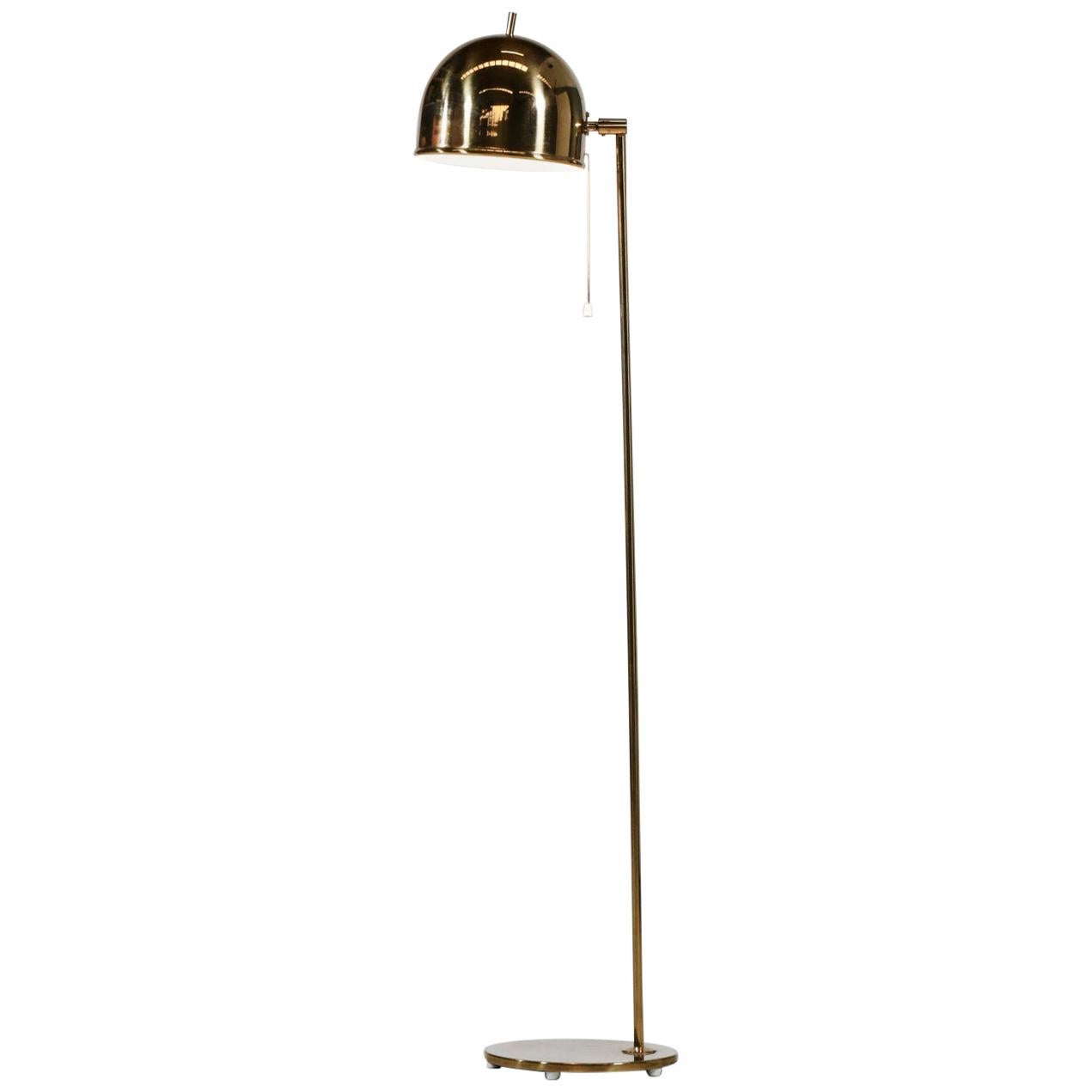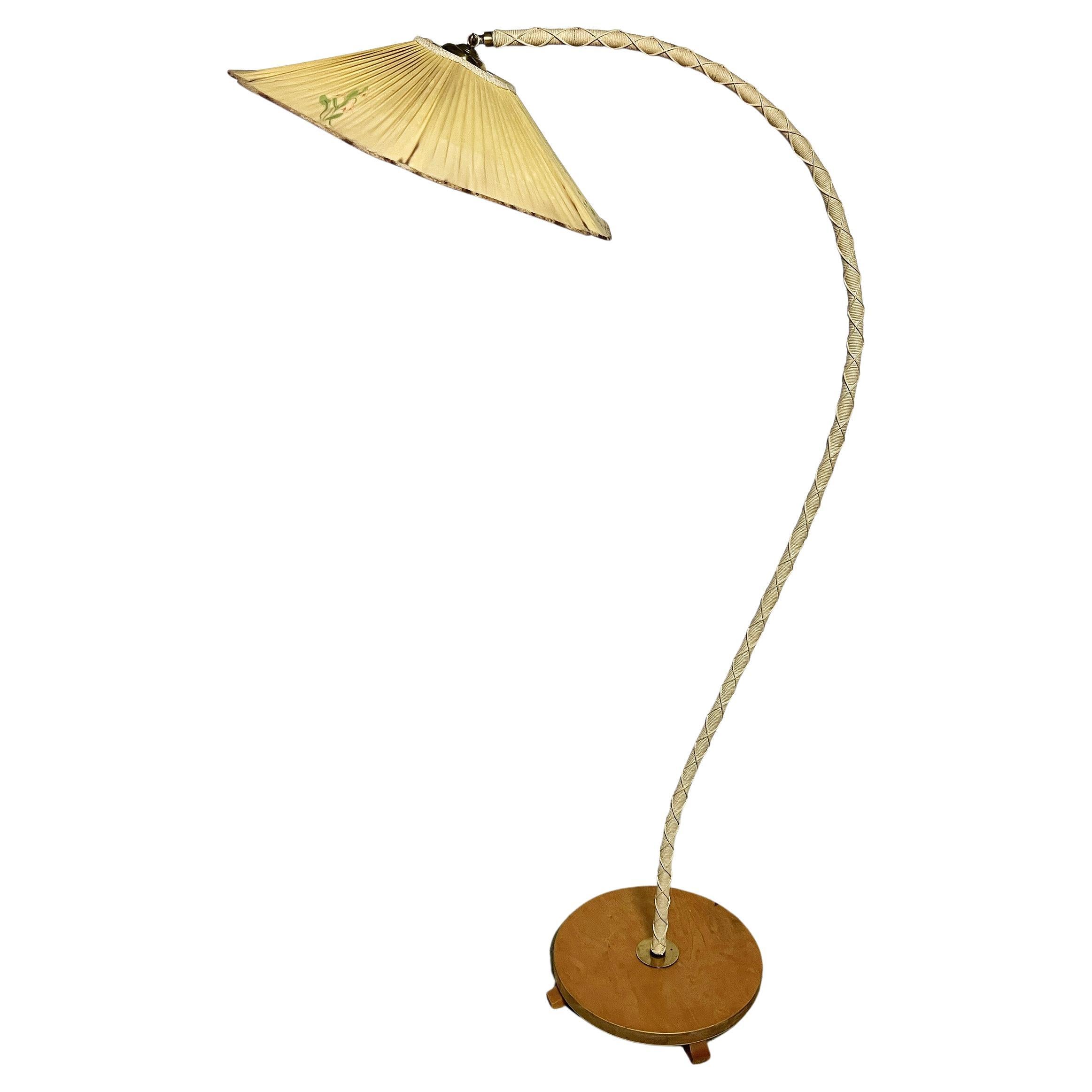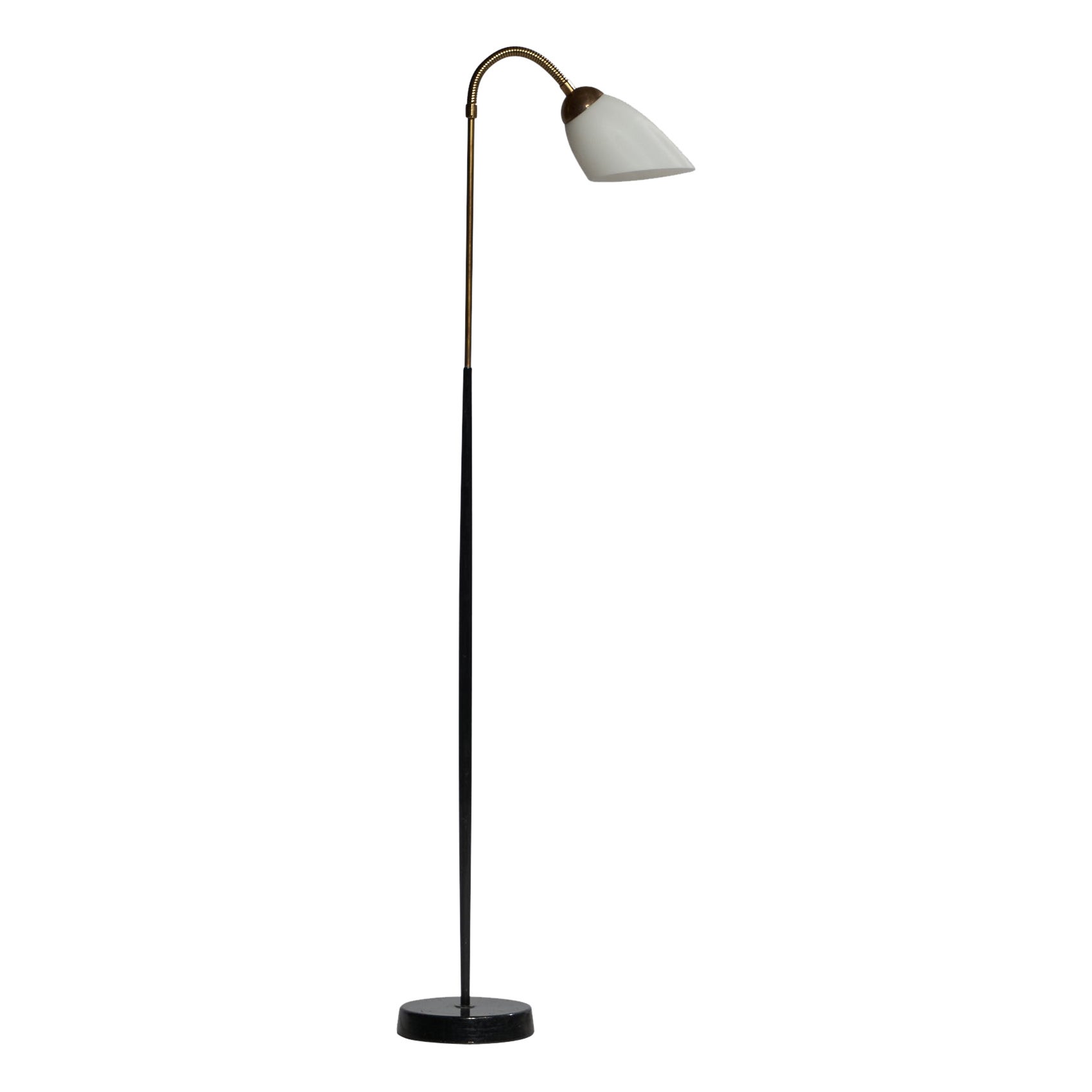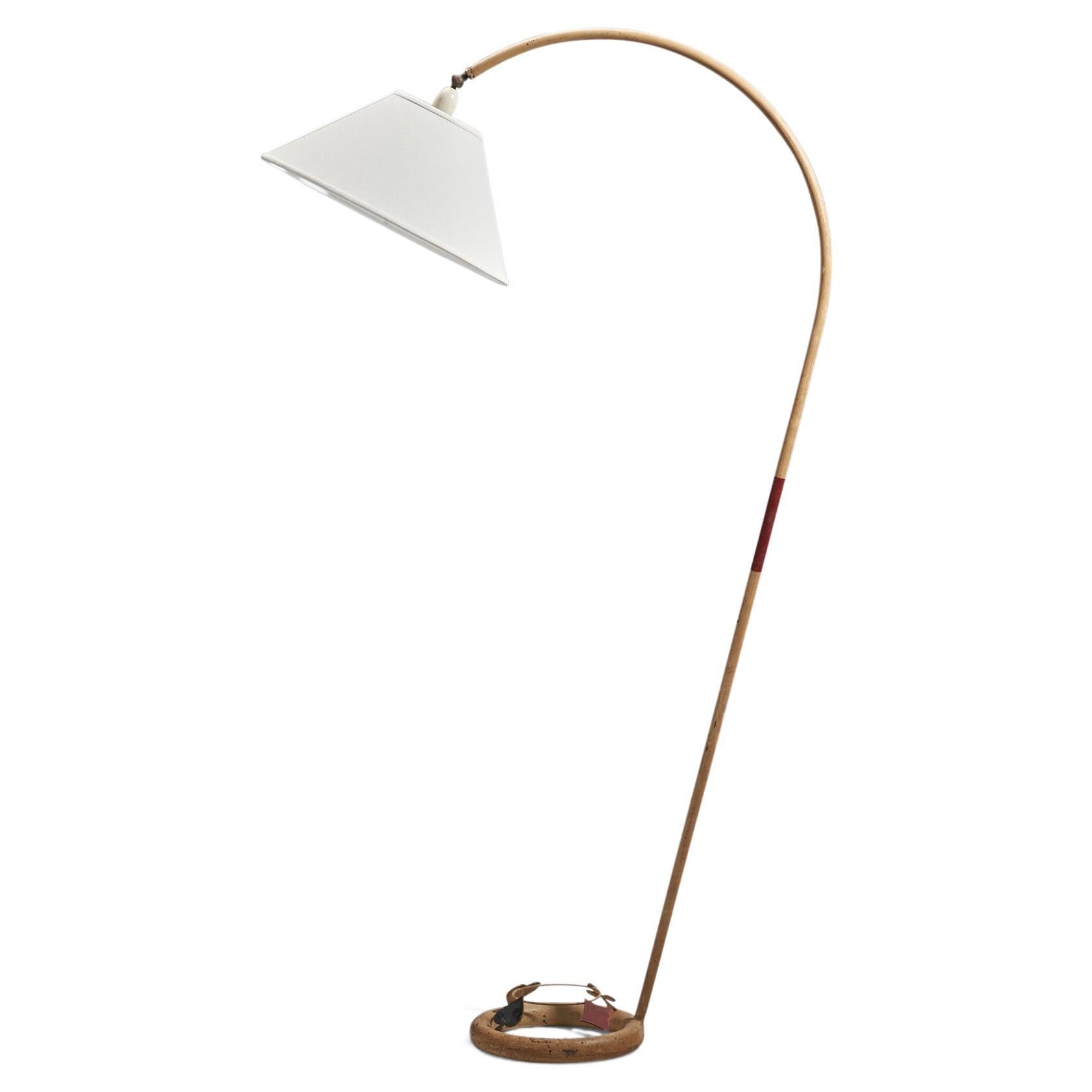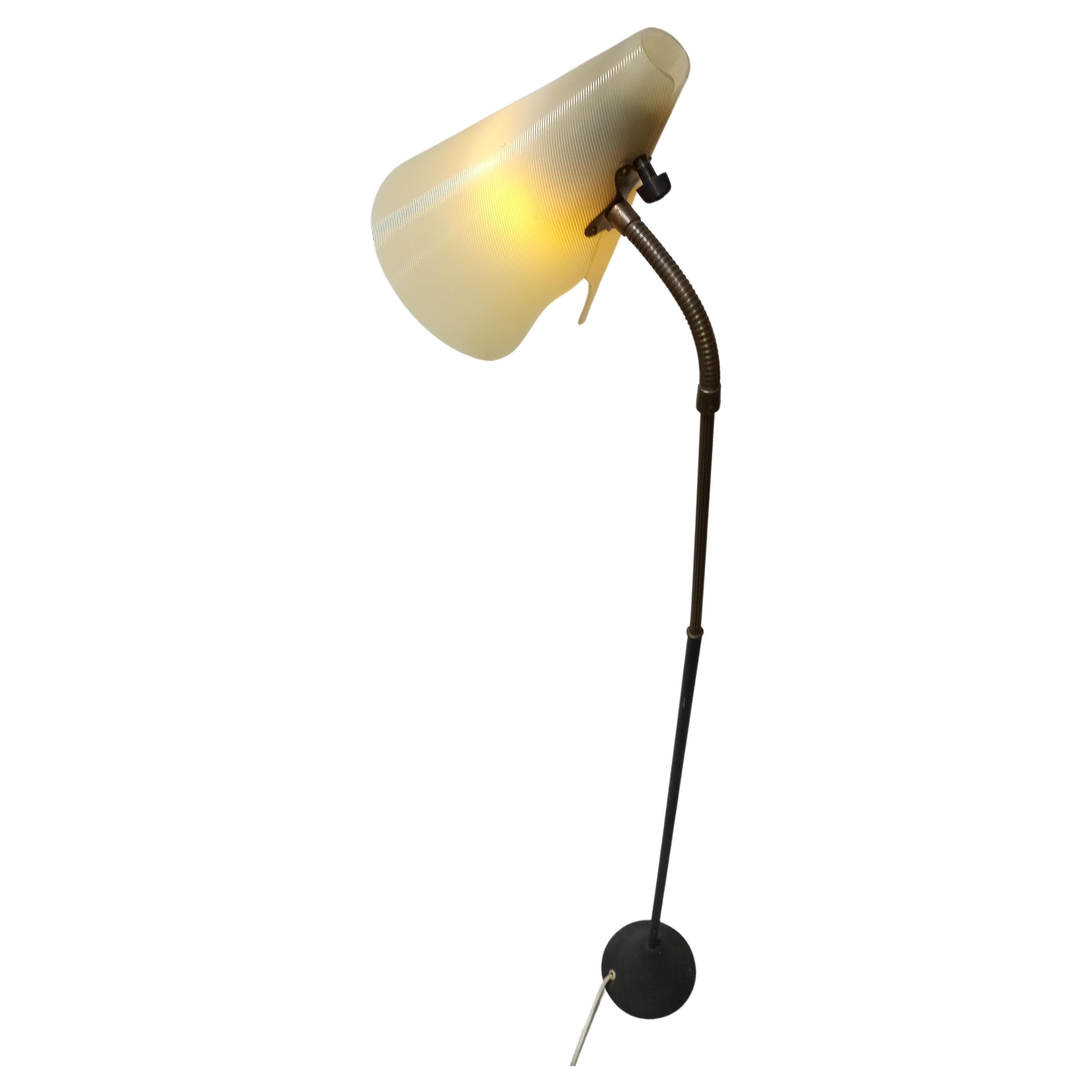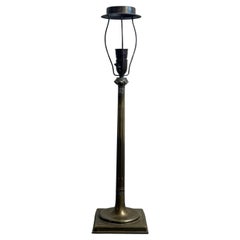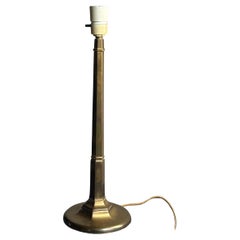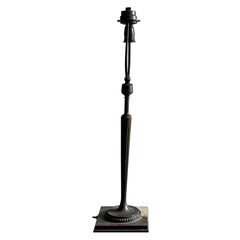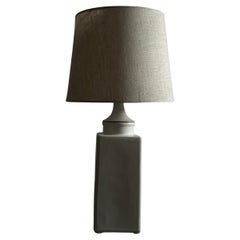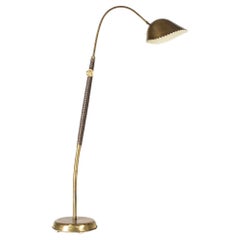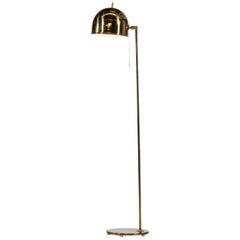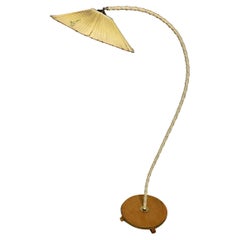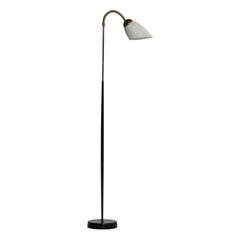Items Similar to Ernst Voss Floor Lamp, Denmark 1930’s
Want more images or videos?
Request additional images or videos from the seller
1 of 8
Ernst Voss Floor Lamp, Denmark 1930’s
$9,633.49
£7,127.58
€8,000
CA$13,320.02
A$14,623.72
CHF 7,629.22
MX$176,967.32
NOK 95,620.48
SEK 90,099.63
DKK 60,912.22
About the Item
Rare floor lamp by the Danish manufacturer Voss Belysning, the lamp is manufactured and desigend in the 1930’s, the lamp is a great of how the Danes had their own interpretation of Art Deco and in a way created their on more modernist style of Art Deco.
Ernst Voss and Voss Belysning where in their time a very important part of Danish design history and were on level with designers and manufacturers like Louis Poulsen, Poul Henningsen, Lyfa and Fog Mørup, sadly they have over the years been forgotten which is very hard to understand when you see the quality of their designs.
Ernst Voss was both an army man and metal worker and in many ways a very important part of the history of the town Fredericia where he lived.
Ernst Voss should be known as the epitome of a determined and principled individual with an indomitable drive. This applies to his work as a military man, business owner, city council member, and private person. His contributions to and work for Fredericia can hardly be overstated.
Ernst Voss was born on November 17, 1826, in Aalborg and died at the age of 77 on December 8, 1903, after a long and exceptionally eventful life.
Ernst Voss came from a distinguished old Pomeranian and Mecklenburg noble family. His father, Gustav Wilhelm Heinrich von Voss, was a major in Aalborg, so the military was not unfamiliar to Ernst Voss when he later chose to follow in his father’s footsteps. In his early years, however, Ernst Voss attended a Latin school and subsequently learned about agriculture. At the age of 19, he took over the farm Jomfrubakken near Mariager.
The farm and agriculture became a quickly concluded chapter for Ernst Voss. In the spring of 1848, the First Schleswig War – the Three Years’ War – became a reality, and Voss enlisted at the age of 21. This would mark the beginning of a long, unbroken military career that only ended when he retired from the army at 52 in 1878. During the Three Years’ War, Ernst Voss first demonstrated his exceptional character. He participated in one of the early major battles at Schleswig on Easter morning, April 23, 1848, where he was in close combat with the enemy. He, along with over 200 Danish soldiers, fell into enemy hands and was held captive for a short time. Later that fall, King Frederik VII held a military review at Lerbæk Mark, where Ernst Voss received the Dannebrogmen’s Badge of Honor. He continued his military education and participated as a second lieutenant in the significant sortie from Fredericia on July 6, 1849. This battle turned the tide of the war in Denmark’s favor. Voss also took part in the war’s largest and most decisive battle at Isted Heath in the third year of the war, on July 25, 1850. He finally participated in the recapture of Frederiksstad (now Friedrichstadt) on August 6, 1850. There, he was wounded by a shell fragment that tore off half of his right ear, and he was subsequently taken to a hospital in Copenhagen. After the war ended in the winter months of 1851, Voss returned to Fredericia, where he was stationed in the garrison.
Ernst Voss continued his military career during peacetime for the next 13 years until war once again cast a dark shadow over the country on February 1, 1864. The unresolved issue from the Three Years’ War, namely the question of the duchies of Schleswig, Holstein, and Lauenburg’s affiliation with Denmark, flared up again and was finally resolved during the Second Schleswig War, which lasted from February 1 to July 20, 1864.
Once again, the now 37-year-old Ernst Voss was found on the battlefield. As a company commander, he and his troops moved into the Dannevirke position after Prussian and Austrian troops had entered Schleswig. Following the orders of the army’s supreme commander, General Christian De Meza, Voss also participated in the subsequent difficult withdrawal from Dannevirke to the Dybbøl position, which began on February 5. Ernst Voss was back in Fredericia during its siege and bombardment on March 20-22, where nearly 3,000 enemy shells fell on the city. On April 26, fortress commander Lieutenant General Niels Christian Lunding was ordered to evacuate Fredericia, which happened on April 28. Undoubtedly, it was a heavy blow for the battle-hardened Ernst Voss to have to evacuate the city, and it wasn’t until November 16, 1864, that Fredericia was free again, with the Austrian occupation force departing.
A few years after the war ended, in 1867, Ernst Voss bought a villa on Slesvigsgade in Fredericia. The villa he chose was undoubtedly carefully selected, as it was the well-known commandant’s residence, Bella Vista.
In 1873, Ernst Voss was appointed Knight of the Dannebrog. Five years later, in 1878, he retired from the army at the age of 52. The new Army Law of 1867 meant that Voss’s age did not allow for further promotion, and as it was not in Ernst Voss’s nature to rest on his laurels, the army became a closed chapter. It should be added that in 1883, Voss received a discharge as a lieutenant colonel and in 1899 as a colonel.
Even before his retirement from the army, Ernst Voss dabbled in his free time with clothespins, American rocking chairs, and fancy goods made of brass and zinc. The same year he left the army, 1878, he obtained a business license as an iron and metal founder in Fredericia. Voss’s Factory started with the production of lamps and fancy goods. In the very first years, modest progress was made, as expected of a newly started production. However, after just five years, Voss introduced steam power into the production, and ten years after its inception, 50 men were employed producing a variety of goods in brass and bronze.
By 1897, Ernst Voss had nearly 20 years as a factory owner behind him. In two decades, Voss’s products had succeeded in capturing significant market shares abroad, making the name world-renowned. Ernst Voss was by then around 70 years old, and his health began to fail. Therefore, on January 4, 1897, he founded the joint-stock company A/S Ernst Voss Fabrik, where he assumed the role of chairman but effectively left the management of the factory to his sons Ditlev and Gustav. Under the joint-stock company A/S Ernst Voss Fabrik, the business truly became a global enterprise, producing kitchenware and later kitchen utensils. It is fair to say that the construction of the large operational building in 1899, the old main building, which is still preserved, marked the sons’ takeover. The Voss family owned the business until 1917, when it was sold to Nordiske Metalvare Fabrikker.
Additionally, Voss was a great asset to his employees and to Fredericia through his 18 years of work on the city council. The Workers’ Building Association of 1909-1910—called Voss Building Association—testifies that A/S Ernst Voss Fabrik cared about the workers’ housing conditions and thereby their general well-being. There is no doubt that this concern for the company’s employees was a direct continuation of the policy Voss had set in the company, which was then followed by his sons. Ernst Voss also established a domestic science school as an evening school early on, where the factory’s girls could improve their household skills.
During his 18-year tenure on the city council, Ernst Voss accomplished significant social work for Fredericia, where improvements in health conditions and work for the poor and children’s welfare were close to his heart. Voss was also a co-founder of the city’s first telephone company, Fredericia Telephone Company.
Ernst Voss died at the age of 77 in 1903. Just four years earlier, he had bid farewell to his wife, Hedevig Mathilde Grotom Sørensen (born March 19, 1833 - died August 20, 1899). Her death took a heavy toll on him. Ernst Voss’s funeral was held at St. Michaelis Church, Fredericia’s garrison church. In the eulogy, Pastor Valeur described Voss as a person with “Love for King and Country,” which aptly describes his life’s work. Another notable event, which speaks for itself, is that all the workers from Voss’s factory pooled together to present a silver wreath for his coffin, and the coffin was carried out of the church by the factory’s 18 oldest workers.
- Creator:Voss Belysning (Designer)
- Dimensions:Height: 61.03 in (155 cm)Width: 23.63 in (60 cm)Depth: 35.44 in (90 cm)
- Power Source:Plug-in
- Voltage:220-240v
- Lampshade:Included
- Style:Scandinavian Modern (Of the Period)
- Materials and Techniques:
- Place of Origin:
- Period:
- Date of Manufacture:1930’s
- Condition:Rewired: Later rewiring, might need to be changed to used in the US. Wear consistent with age and use. Minor fading. Minor dent on the brass foot.
- Seller Location:Valby, DK
- Reference Number:1stDibs: LU6559240890402
About the Seller
5.0
Vetted Professional Seller
Every seller passes strict standards for authenticity and reliability
1stDibs seller since 2022
27 sales on 1stDibs
Typical response time: 5 hours
- ShippingRetrieving quote...Shipping from: Valby, Denmark
- Return Policy
Authenticity Guarantee
In the unlikely event there’s an issue with an item’s authenticity, contact us within 1 year for a full refund. DetailsMoney-Back Guarantee
If your item is not as described, is damaged in transit, or does not arrive, contact us within 7 days for a full refund. Details24-Hour Cancellation
You have a 24-hour grace period in which to reconsider your purchase, with no questions asked.Vetted Professional Sellers
Our world-class sellers must adhere to strict standards for service and quality, maintaining the integrity of our listings.Price-Match Guarantee
If you find that a seller listed the same item for a lower price elsewhere, we’ll match it.Trusted Global Delivery
Our best-in-class carrier network provides specialized shipping options worldwide, including custom delivery.More From This Seller
View AllEarly 20th Century Bronze Table Lamp by Thorvald Bindesbøll, Denmark
By Thorvald Bindesbøll
Located in Valby, 84
Rare bronze table lamp designed by celebrated Danish artist and designer Thorvald Bindesbøll (1846–1908). The lamp features a finely cast columnar base with characteristic decorative...
Category
Antique 1890s Danish Art Nouveau Table Lamps
Materials
Bronze
Early 20th Century Bronze Jugend Table lamp, Denmark Circa 1900’s
Located in Valby, 84
An elegant and rare Jugendstil (Art Nouveau) table lamp crafted in solid bronze, Denmark, circa 1900.
The lamp features a beautifully tapered octagonal stem, resting on a softly cur...
Category
Antique Early 1900s Danish Jugendstil Table Lamps
Materials
Bronze
Bronze table lamp by Siegfried Wagner, Denmark c. 1900.
By Siegfried Wagner, Tvermoes & Abrahamson
Located in Valby, 84
This exceptional bronze table lamp, designed by the Danish sculptor Siegfried Wagner around 1900, is a rare and striking piece that seamlessly blends functionality and artistry. Man...
Category
Antique Early 1900s Danish Art Nouveau Table Lamps
Materials
Bronze
Nils Kähler table lamp in white glazed ceramic, Denmark 1960’s
By Nils Kähler
Located in Valby, 84
A stunning table lamp designed by Nils Kähler in the 1960s, showcasing the hallmark craftsmanship and timeless design of the Kähler ceramics workshop. This piece features a minimalis...
Category
Vintage 1960s Danish Scandinavian Modern Table Lamps
Materials
Ceramic
Early 20th Century Danish Bronze Table Lamp
Located in Valby, 84
A refined and elegant Danish bronze table lamp from the early 20th century. The lamp features a beautifully patinated bronze surface with neoclassical-inspired detailing, including a...
Category
Antique Early 1900s Danish Arts and Crafts Table Lamps
Materials
Bronze
Early 20th Century Danish Art Nouveau Bronze Table Lamp, circa 1910
Located in Valby, 84
Early 20th Century Danish Art Nouveau table lamp crafted in solid bronze, dating to around 1910. This elegant piece showcases the flowing organic lines typical of the Art Nouveau per...
Category
Vintage 1910s Danish Art Nouveau Table Lamps
Materials
Brass, Bronze
You May Also Like
Midcentury Modernist Floor Lamp from ASEA, Sweden, 1930s
By ASEA
Located in Stockholm, SE
Striking modernist floor lamp from ASEA, in a luxurious design in brass and leather. Stem partially dressed with leather, decorative screw mechanism for adjusting the height from reg...
Category
Vintage 1930s Swedish Scandinavian Modern Floor Lamps
Materials
Brass
Bergboms Floor Lamp G-075, Sweden 1960s Scandinavian Design Paavo Tynell Style
By Bergboms
Located in Ternay, Auvergne-Rhône-Alpes
Floor lamp edited by the Swedish company Bergboms.
Category
Vintage 1960s Swedish Scandinavian Modern Floor Lamps
Materials
Brass
Scandinavian Modern Floor Lamp, Anonymous, Sweden ca 1940's
Located in Örebro, SE
A brass, cord, elm floor lamp, Sweden, ca 1940s.
Wear and patina consistent with age and use.
Original shade with visible signs of use and wear.
Brass patina, some wear to the cord ...
Category
Vintage 1940s Swedish Scandinavian Modern Floor Lamps
Materials
Brass
Danish Designer, Floor Lamp, Brass, Metal, Glass, Denmark, 1940s
Located in High Point, NC
An adjustable brass, black-lacquered metal and opaline glass floor lamp designed and produced in Denmark, 1940s.
Overall Dimensions (inches): 49.9” H x 7” W x 17.4” D. Stated dimens...
Category
Vintage 1940s Danish Scandinavian Modern Floor Lamps
Materials
Metal, Brass
Danish, Large Floor Lamp, Painted Cast Metal, Fabric, Denmark, 1930s
Located in High Point, NC
A large floor lamp designed and produced in Denmark, 1930s. Base features ornamentation illustrating the four French suits.
Category
Vintage 1930s Danish Scandinavian Modern Floor Lamps
Materials
Metal
Rare mid-century floor lamp by Hans Bergström for Asea
By ASEA
Located in Kiel, SH
Floor lamp by Hans Bergström for Swedish company ASEA
Plastic Shade on a metal base
Category
Vintage 1960s Swedish Scandinavian Modern Floor Lamps
Materials
Metal
More Ways To Browse
1930 Lamps
1930s Modern Furniture
1930 Vintage Fabric
1930 Brass Lamps
1930s Danish Modern
Art Deco Cast Iron Lamp
Metal And Leather Rocking Chair
Schleswig Holstein
Fancy Chair
Brass And Leather Rocking Chair
Danish Soldier
Ernst Voss
American Fancy Chair
Sergio Terzani Palm
Severin Hansen Bridge Lamp
Severin Hansen Bridge
Sistema Flu
Sonneman Triennale

